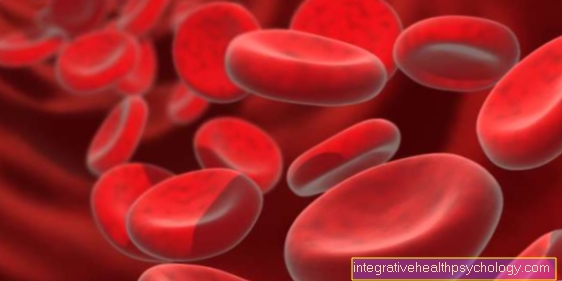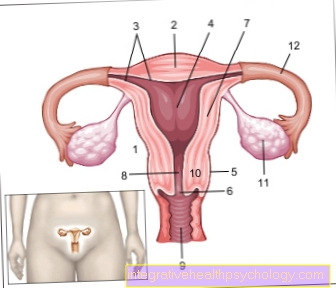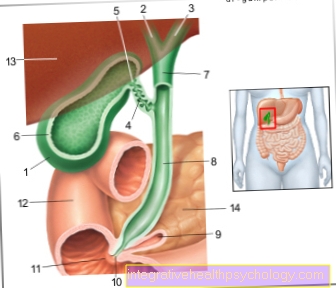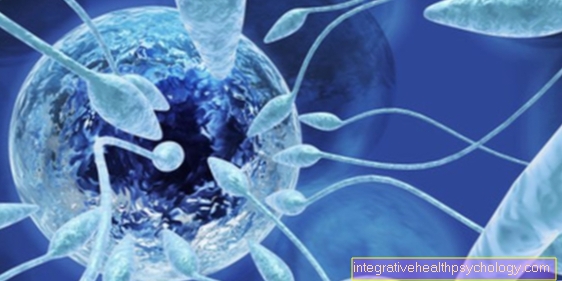Cell plasma in the human body
definition
As cell plasma or cytoplasm denotes the entire content of the cell with the exception of the cell organelles. Cytoplasm is an organic liquid that forms the basic substance of every cell. In addition to water, cell plasma consists primarily of proteins, nutrients and enzymes that are essential for the cell to function.

Function of the cell plasma
The cytoplasm forms the basic structure of a cell and gives it its shape by completely filling the cell. Every cell, both that of bacteria, plants and animals, is made up of cytoplasm. The cytoplasm has a gel-like consistency. All components of a cell are contained in it. The cell plasma is outwardly through the Cell membrane from extracellular space delimited.
The cytoplasm itself consists of the Cell fluid (Cytosol), the Cell organelles and the Cytoskeleton. The cytoskeleton is a stabilizing protein that forms a dynamic network and gives the cell structure. Cell organelles are all functional systems within a cell, such as the Cell nucleus, Mitochondria, the endoplasmic reticulum and the Ribosomes. Organelles are typically enclosed by their own membrane and are only found in eukaryotes.
What are the components and what is the composition of the cell plasma?
The cell plasma or cytoplasm describes the organic substance within cells with the exception of all cell organelles, such as mitochondria and ribosomes. The cell plasma has a liquid to gel-like consistency and makes up the main part of a cell. This cell fluid (cytosol) is made up of various components.
The main part with about 80% is made up of water (H2O) and many substances dissolved in it such as sugar, electrolytes and nutrients. This is important to give the cell a shape and to fill the volume within the cell membrane.
About 10% of the cell plasma consists of proteins. Proteins are essential components of enzymes and are also involved in the structure and transport processes of cells.
Fats (lipids) make up a small proportion of around 4%. Fats are needed to build and maintain the cell membrane and are also the starting materials for other products, such as inflammation mediators. In addition, other components are important, but these are only found in very low concentrations in the cell plasma. These include several ions such as sodium (Na +) and chloride (Cl-). These charged particles ensure that the cell plasma is the right environment for various metabolic pathways. In addition to the cell fluid, the cell plasma also contains a stabilizing part, which is known as the cytoskeleton. This cytoskeleton consists of thread-like proteins that span the cell fluid and thereby ensure the three-dimensional shape of the cell.
The most important function of the cytoplasm is to give the cell its structure: because there is no air inside a cell, the cytoplasm has to fill all empty spaces of the cell with liquid. In addition, many substances are transported through the interior of a cell, with the cytoplasm serving as a medium for substance transport. The cell stores water and nutrients in the form of cytoplasm and can react to external influences by changing the cytoplasm composition.
Many important cell components are assembled in the form of proteins in the cell plasma. To do this, the genetic material contained in the cell nucleus is transcribed into RNA, which is then released and used in the cytoplasm as a construction guide for protein synthesis. In addition to the structure of proteins, the transport of various substances and the storage of various substances, the cytoplasm has another important function: the breakdown of Metabolitesthat occur during the metabolism and other substances that are not required.
What is the cell membrane?
In prokaryotic and eukaryotic cells, the cell membrane describes the envelope of the cell plasma. In this way, the cell membrane protects the cell from external influences. The basic structure of the cell membrane is the same for all cells. The basic structure is a double layer of fat (lipid bilayer). This consists of different fats (lipids), such as phospholipids and sphingolipids. The two fat layers differ in their composition of fats. Various proteins are also embedded in this lipid bilayer. These have different functions. Some act as channels to transport substances in and out of the cell, others are receptors for different molecules. The property of how fluid or how mobile the cell membrane is is influenced by the presence of cholesterol.
Functions of the cell plasma
The tasks of the cytoplasm include the transport of substances and the build-up and breakdown of proteins, enzymes, signal molecules and Metabolites. Another important task is the generation of energy within the mitochondria in the form of ATP, which is required for almost all cell processes.
In the cytoplasm, the cytoskeleton gives the cell its structure and creates a connection to the cell environment outside the adjacent cell membrane. Cell organelles in the cytoplasm take on specialized tasks and the liquid metier of the cytoplasm provides an optimal environment for many biochemical reactions that have to take place in a cell as part of the metabolism. The cytoplasm has a regulating effect on these reactions, connects the various cell components with one another and thus enables communication within the cell.
Further information on cell metabolism can be found here: Cellular respiration in humans
Cell plasma color
In addition to water, the cytoplasm consists largely of proteins and is generally colorless.Using various staining techniques, the structures including the cytoplasm can be stained to make them visible. The widespread hematoxylin-eosin staining (HE staining) stains the cytoplasm orange, but the color depends on the condition of the cell: active and proliferating cells, for example, have a lot of RNA in the cytoplasm, which is stained blue-violet.
Further information on staining techniques can be found here: Histology





























